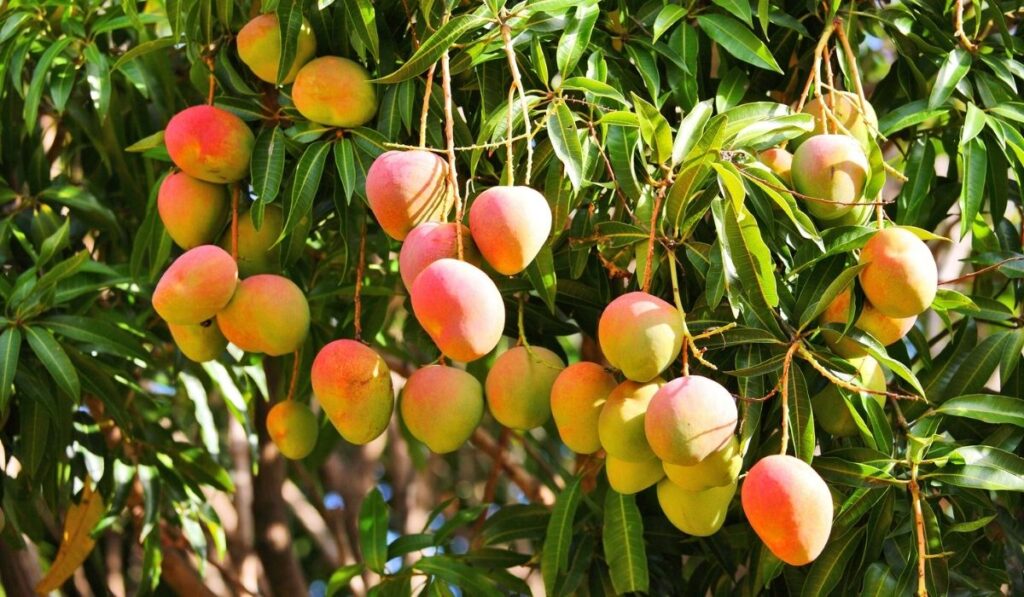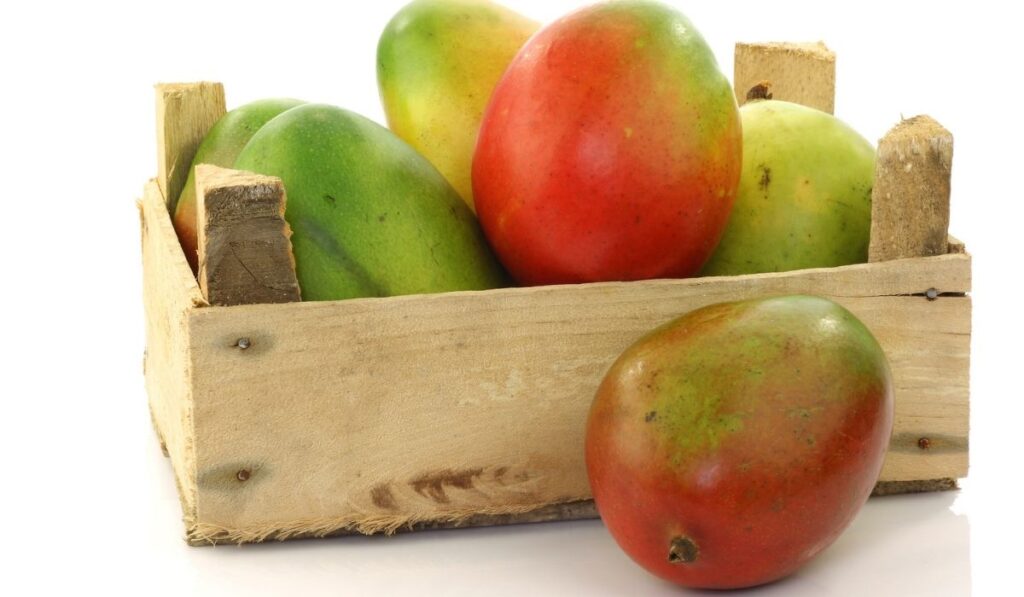Mangos are a delicious fruit that is native to Southeast Asia and has been cultivated there for centuries. Mangos are high in vitamin C and fiber and can be eaten fresh, cooked, or dried. Mangos also come in different colors, including green, yellow, red, and orange. The most popular variety in the United States is the Tommy Atkins mango, which is small and yellow with a creamy texture.
Mangos are available year-round, but distinct varieties peak at different times. In the US, Tommy Atkins and Ataulfo mangos peak between March and July; the Kent variety between December and January; the Haden variety between May and February; and the Francis variety from July to November.
You don’t need to worry about missing out on mango season, because there’s pretty much always a variety of mango available. However, if you want to enjoy mangos at their peak flavor, then pay attention to which varieties are in season where you live. Here’s everything you need to know about mango seasons.
Which Month Is Mango Season?

Mangos are found all year round, thanks to the many varieties that come into season at different times of the year. In the United States, Florida and California have the ideal climate for mangos.
The Tommy Atkins variety is the most popular type of mango in the United States. They are large and oval-shaped with red and green skin. They have a sweet taste with a hint of sourness. The variety is found all year round, but the peak season is between March and July.
Ataulfo mangos are also popular in the US. They are smaller and more yellow than Tommy Atkins mangos. Ataulfos have a sweeter taste than other types of mangos. Their peak season is between March and July.
Kent mangos are another popular option. They are large and oval-shaped with a green skin that turns red when ripe. Kent mangos have a sweet taste with no sourness. Their peak season is between December and January.
Keitt mangos are available in the US from April to July and October to December. They are large and oval-shaped with a green skin that turns yellow or red when ripe. Keitt mangos have a sweet taste with no sourness.
Are Mangos Good for You?
Mangos are a healthy fruit that can be enjoyed as part of a balanced diet. There are many different varieties of mangos, so you can enjoy them at different times of the year. If you catch yourself in the off season, options like dried mango (on Amazon) can help you keep these delicious fruits in your diet.
They can be eaten fresh or cooked, added to smoothies, used in sauces, or made into mango chutney. Mangos are a good source of vitamins A and C. They also contain fiber, potassium, and magnesium. Mangos are helpful for managing various medical conditions, including:
Diabetes
Mangos contain a type of sugar called fructose. Fructose is slowly absorbed into the bloodstream, so it doesn’t cause spikes in blood sugar levels. This makes mangos a good fruit for people with diabetes.
Asthma
Vitamin C is a natural anti-inflammatory and can help to reduce the inflammation associated with asthma.
Arthritis
The anti-inflammatory properties of vitamin C can also help to reduce the inflammation and pain associated with arthritis.
Digestion
Mangos are a good source of fiber, which is important for optimal digestion. Fiber helps to keep things moving through the digestive system and can prevent constipation.
Heart Health
Potassium is an essential mineral for heart health. It helps to keep blood pressure in check by balancing out the effects of sodium. The fiber present in mangos can also help to lower cholesterol levels.
Immunity
Vitamin C is essential for a robust immune system. It helps the body to fight off infections and disease. Vitamin A is important for skin health. It helps to keep skin soft and supple. Beta-carotene can also help to protect the skin from sun damage.
Why Do You Soak Mangos in Water?
Typically, mangos are safe to eat after washing them in running water. However, some people may prefer to soak mangos in water for 3-4 hours before eating them. This is because soaking mangos in water can remove any pesticide residues, bugs, insects, and soil that may be found on the fruit after harvesting.
Soaking mangos in warm water can make them taste sweeter. Mangos contain a natural sugar called sucrose. When mangos are soaked in water, the sucrose dissolves, and the fruit becomes sweeter. Your mileage may very with this technique, but some people who eat mangos regularly swear by it.
How to Select and Store Mangos

When selecting mangos, look for fruit that is plump and firm. Avoid mangos that are bruised or have soft spots. Ripe mangos will give off a sweet smell.
You can also tell if a mango is ripe by gently pressing on the skin. If the skin gives to pressure, then the mango is ripe. Once you have selected ripe mangos, you can store them in the fridge for 3-5 days.
Mangos can also be frozen whole or sliced. To freeze mangos, wash them first in running water. Then, place them on a baking sheet lined with parchment paper and put them in the freezer.
Once they’re frozen solid, transfer them to a freezer-safe bag or container. Frozen mangos remain edible for 6-8 months.
